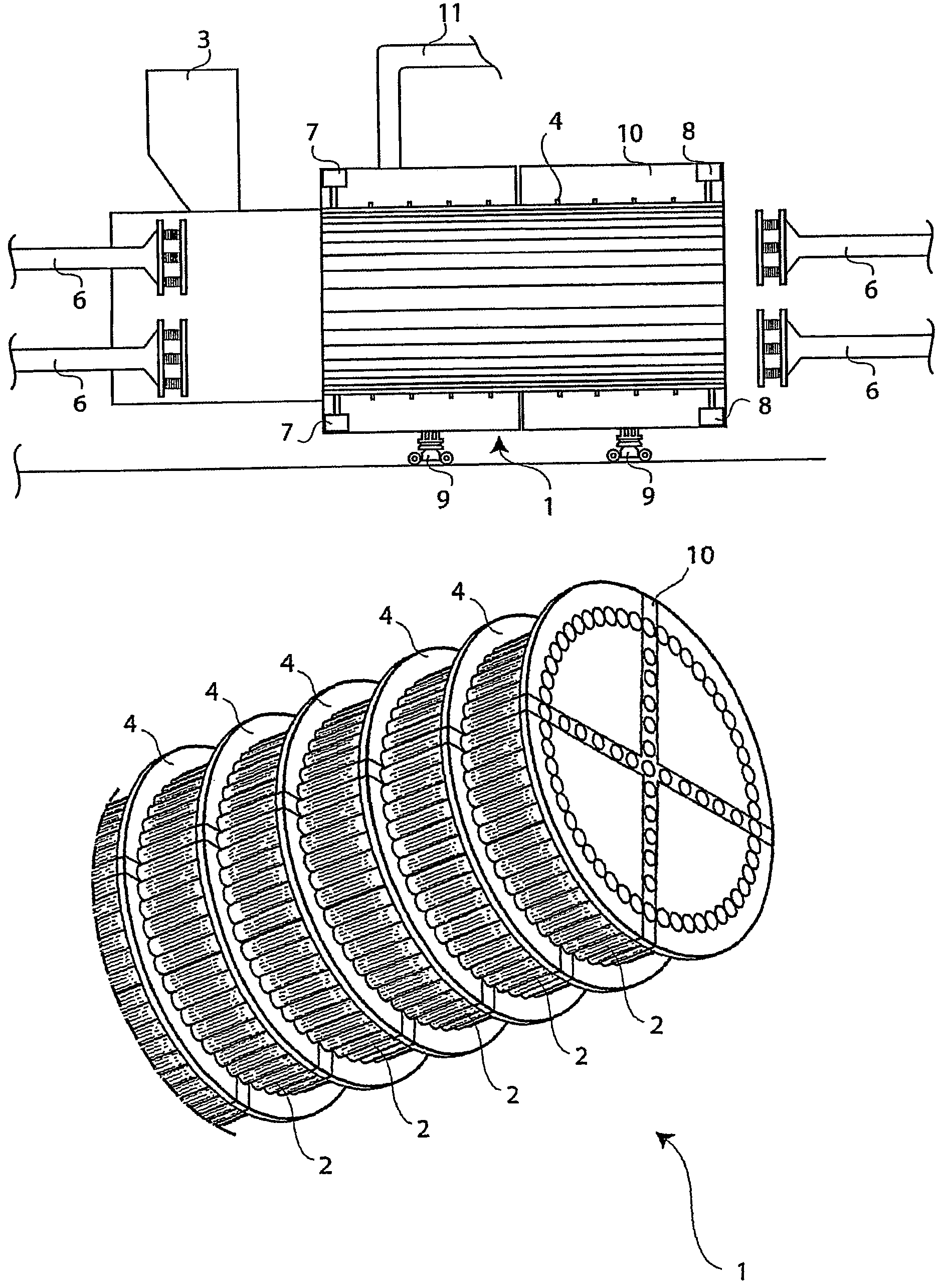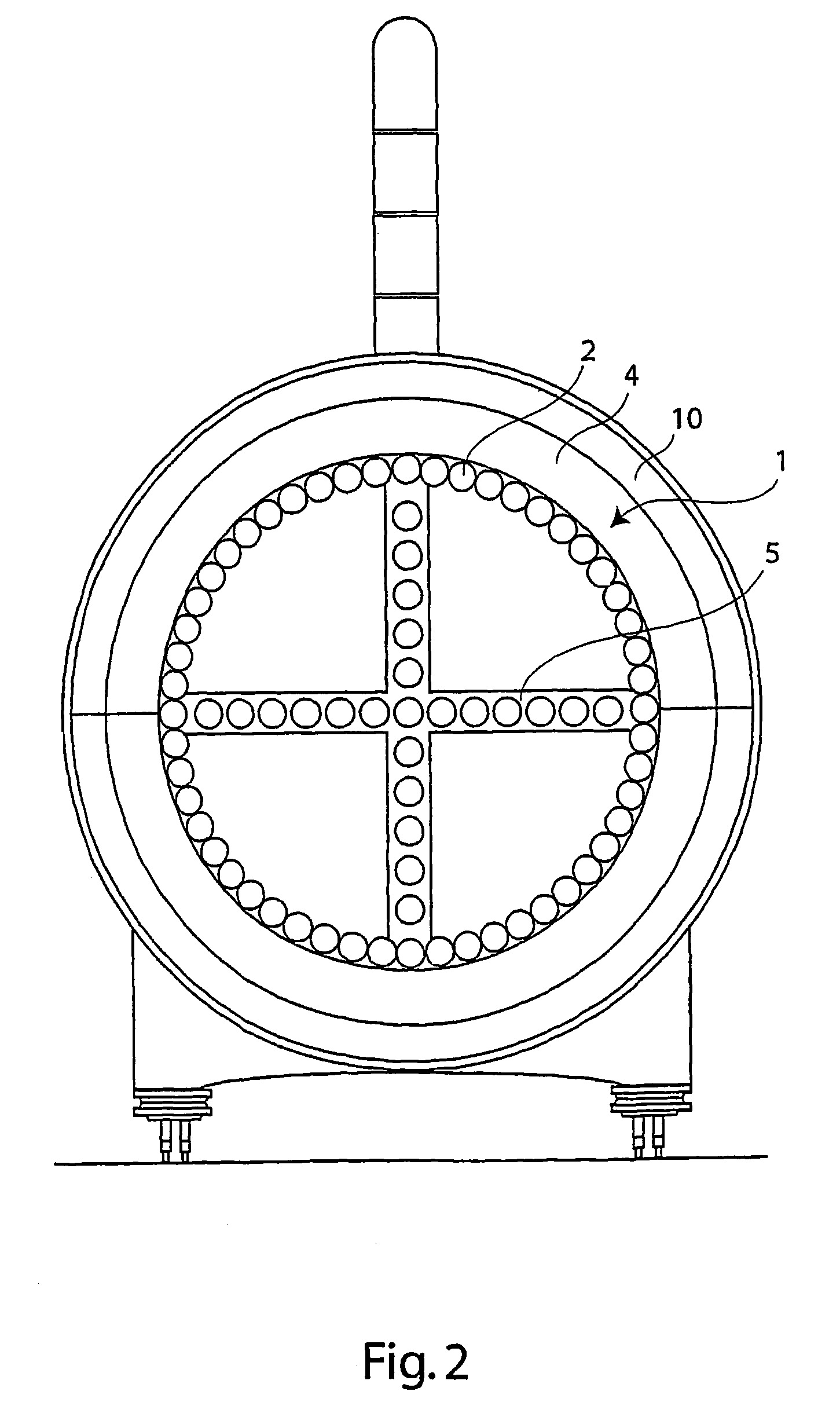Double flow cage compactor dryer apparatus and method of compacting and drying wastes
a dryer and compactor technology, applied in drying, lighting and heating equipment, and stationary filter elements, etc., can solve the problems of urban solid waste disposal, environmental drawbacks, and more difficult to find new areas, so as to improve the resistance of the device, reduce the time, and reduce the effect of heat transmission
- Summary
- Abstract
- Description
- Claims
- Application Information
AI Technical Summary
Benefits of technology
Problems solved by technology
Method used
Image
Examples
Embodiment Construction
[0062]Making reference to the figures, it can be observed the main body of the drying—compacting apparatus of the invention comprising a cylindrical body 1, made up of an assembly of tubes 2 coursed by a thermal carrier fluid, said tubes 2 being positioned according to the generatrixes of the cylinder. Thus, within the tubes 2 a cylindrical space is realised, said space being divided into four equivalent sections by further tubes, coursed by the thermal carrier fluid, said further tubes being arranged according to a cross position. Wastes to be compacted and dried are discharged from above into the apparatus, within a loading chamber close to one of the basis of the cylindrical body, by a hopper 3. By the heat exchanged among the tubes, apparatus warms the discharged wastes, acting as an oven.
[0063]Furthermore, in view of the good features of the tube to act as beams, they are dimensioned and constrained in such a way that the cylindrical shaped lateral body acts also as bearing str...
PUM
| Property | Measurement | Unit |
|---|---|---|
| humidity | aaaaa | aaaaa |
| pressure | aaaaa | aaaaa |
| length | aaaaa | aaaaa |
Abstract
Description
Claims
Application Information
 Login to View More
Login to View More - R&D
- Intellectual Property
- Life Sciences
- Materials
- Tech Scout
- Unparalleled Data Quality
- Higher Quality Content
- 60% Fewer Hallucinations
Browse by: Latest US Patents, China's latest patents, Technical Efficacy Thesaurus, Application Domain, Technology Topic, Popular Technical Reports.
© 2025 PatSnap. All rights reserved.Legal|Privacy policy|Modern Slavery Act Transparency Statement|Sitemap|About US| Contact US: help@patsnap.com



